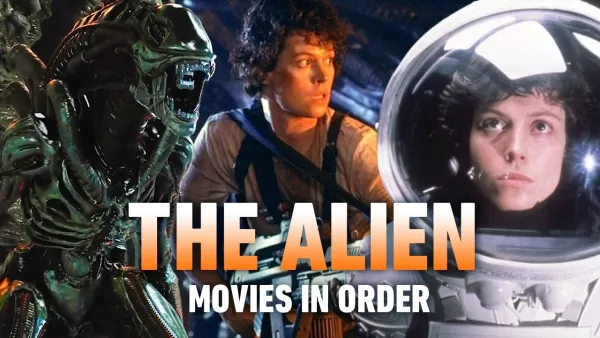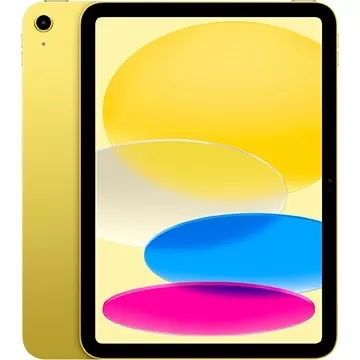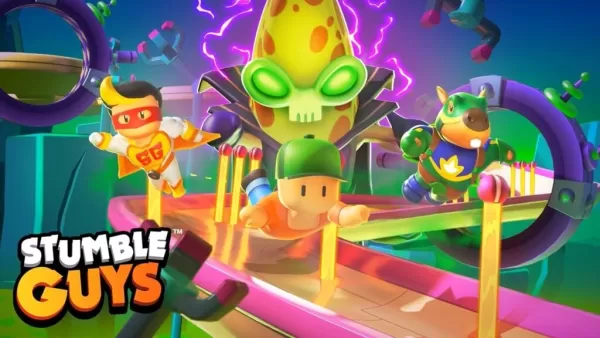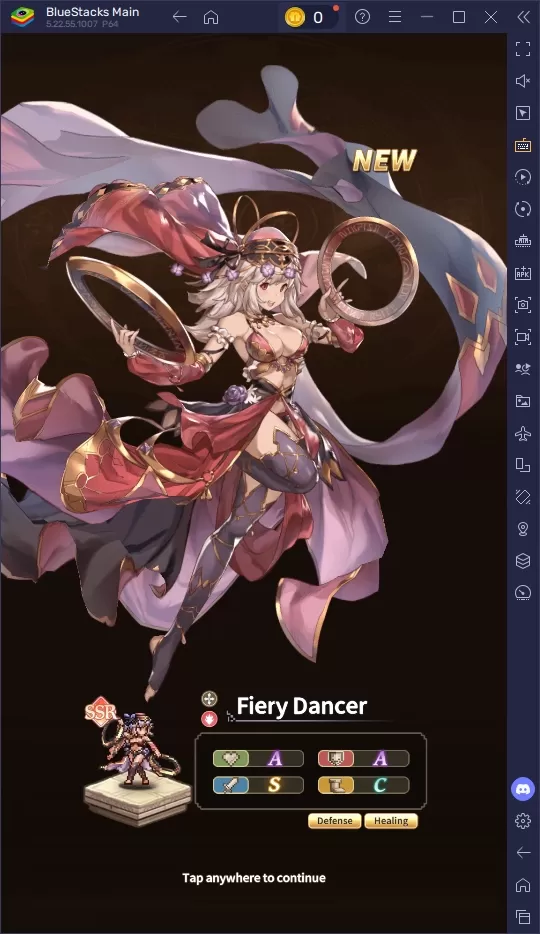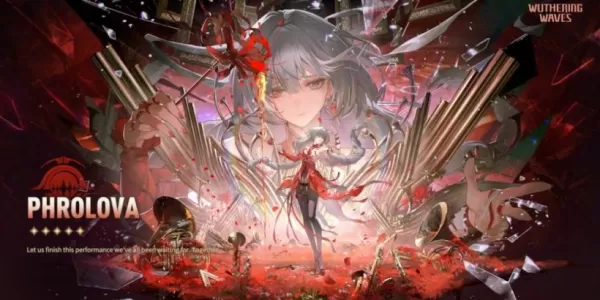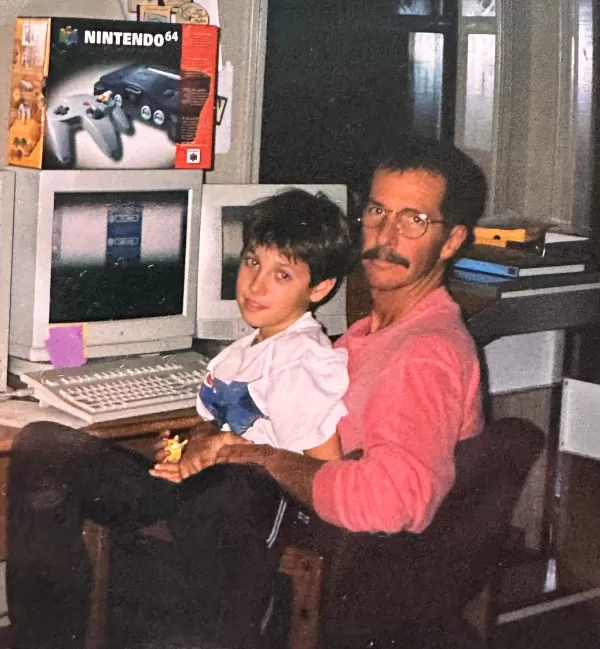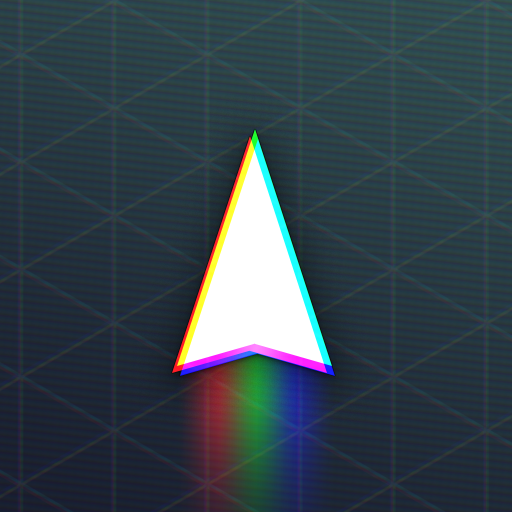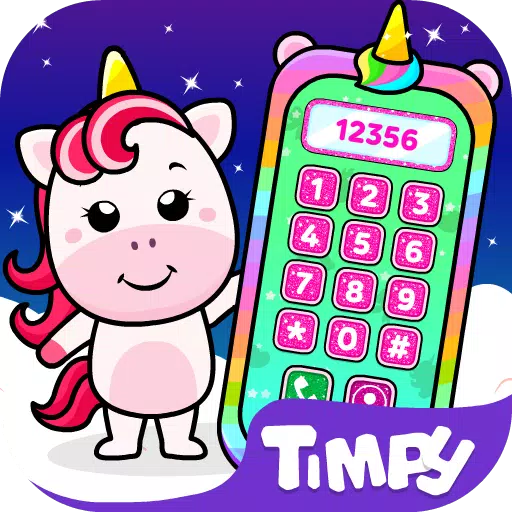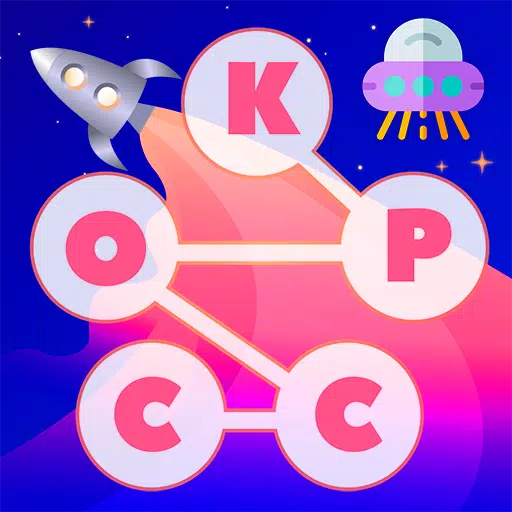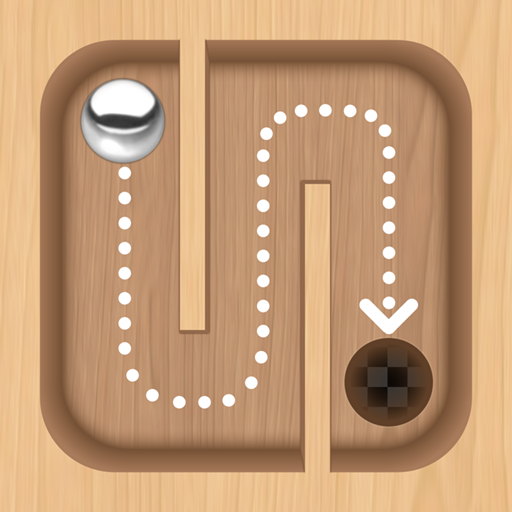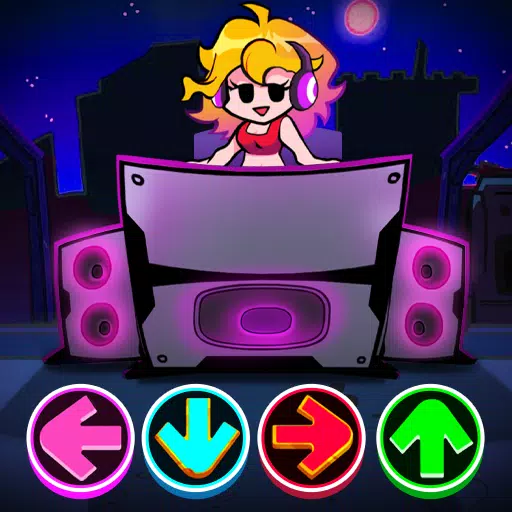 Civilization VII's Deluxe Edition launched recently, and online discussions are already buzzing about its user interface (UI) and other shortcomings. But is the UI truly that problematic? Let's delve into the game's UI elements and assess whether the criticism is justified.
Civilization VII's Deluxe Edition launched recently, and online discussions are already buzzing about its user interface (UI) and other shortcomings. But is the UI truly that problematic? Let's delve into the game's UI elements and assess whether the criticism is justified.
← Return to Sid Meier's Civilization VII main article
Is Civ 7's UI as Bad as They Say?
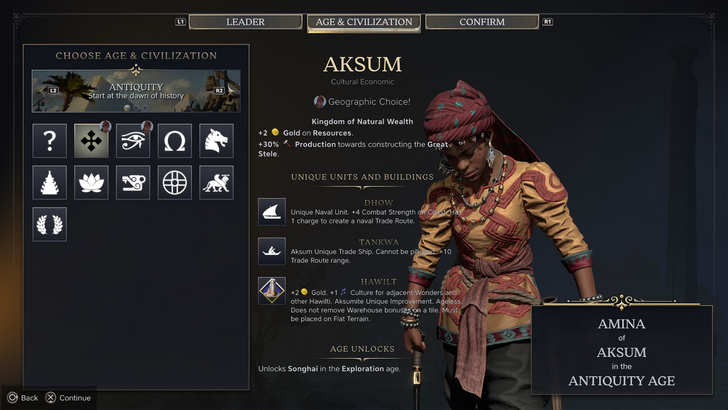 Early access players of the Deluxe and Founder’s Editions have already voiced concerns, especially regarding the UI and missing quality-of-life features. However, before jumping to conclusions, let's objectively evaluate the UI's effectiveness as a 4X game interface. We'll analyze its components to determine if it meets the standards of a well-designed 4X UI.
Early access players of the Deluxe and Founder’s Editions have already voiced concerns, especially regarding the UI and missing quality-of-life features. However, before jumping to conclusions, let's objectively evaluate the UI's effectiveness as a 4X game interface. We'll analyze its components to determine if it meets the standards of a well-designed 4X UI.
Evaluating a 4X UI: Key Criteria
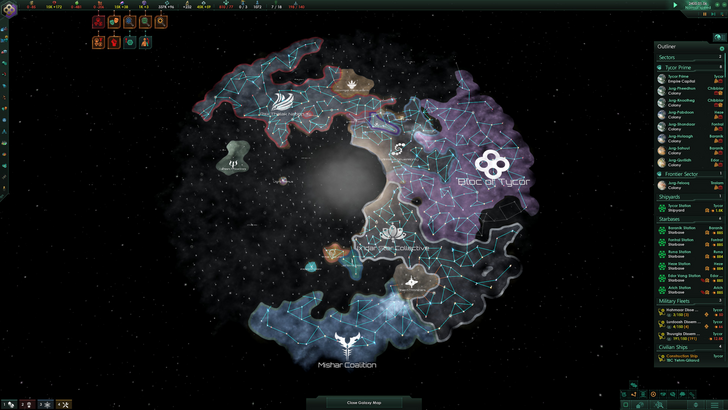 While some argue for objective 4X UI design principles, the reality is more nuanced. UI design depends heavily on the game's context, style, and goals. However, common elements contribute to effective 4X UIs across various games. Let's assess Civ 7's UI against these established elements.
While some argue for objective 4X UI design principles, the reality is more nuanced. UI design depends heavily on the game's context, style, and goals. However, common elements contribute to effective 4X UIs across various games. Let's assess Civ 7's UI against these established elements.
Information Hierarchy
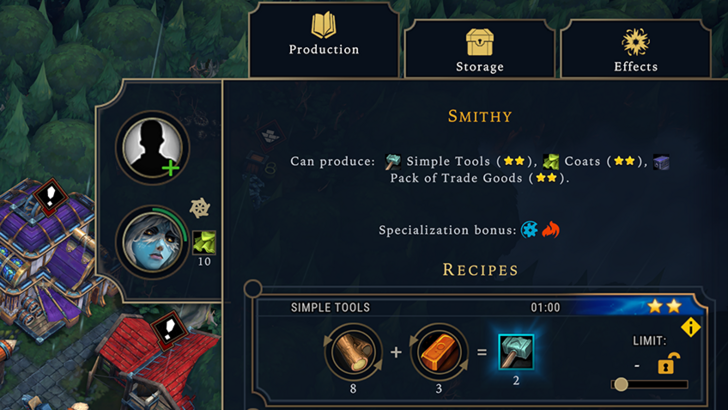 A clear information hierarchy prioritizes accessibility and importance. Frequently used resources and mechanics should be prominent, while less critical features should be easily accessible. The UI shouldn't display everything simultaneously but should organize information logically.
A clear information hierarchy prioritizes accessibility and importance. Frequently used resources and mechanics should be prominent, while less critical features should be easily accessible. The UI shouldn't display everything simultaneously but should organize information logically.
Against the Storm provides a strong example. Its building info menus, accessed via right-click, use tabs to organize information by relevance and frequency of use.
Civ 7's resource summary menu displays resource allocation, separating income, yields, and expenses. While the table format is effective, it lacks granular detail. It shows resource origins from Rural Districts but doesn't specify the exact district or hex. Expense breakdowns are also limited. Therefore, while functional, it could benefit from increased specificity.
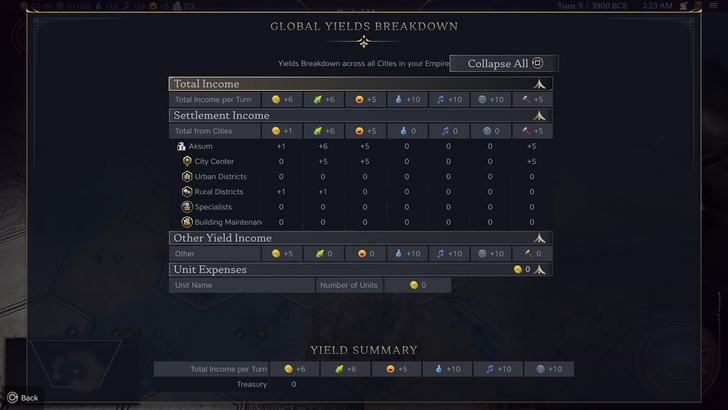
Visual Indicators
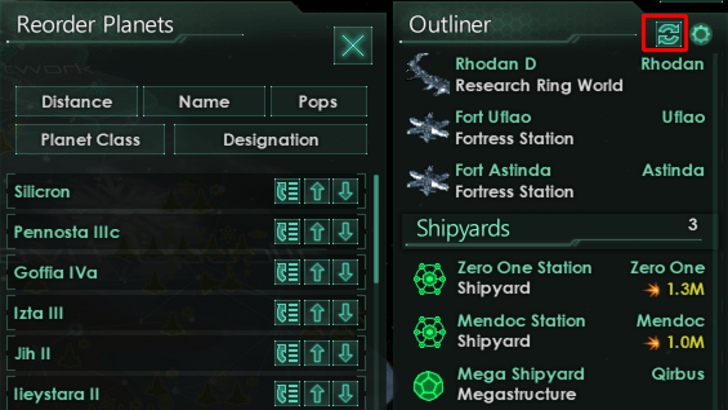 Effective visual indicators (icons, colors, overlays) convey information quickly without relying on text. Stellaris' Outliner, despite overall UI criticism, showcases this well.
Effective visual indicators (icons, colors, overlays) convey information quickly without relying on text. Stellaris' Outliner, despite overall UI criticism, showcases this well.
Civ 7 utilizes iconography and numerical data. The tile yield overlay, settlement overlay, and settlement expansion screen are effective. However, the absence of certain lenses present in Civ 6 (appeal, tourism, loyalty) and customizable map pins is a significant drawback for many players.
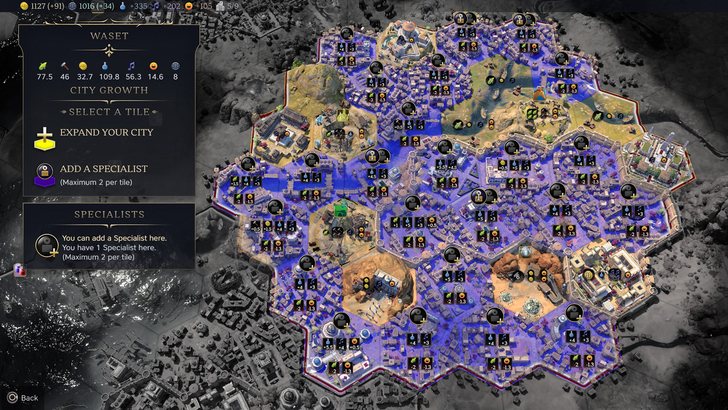
Search, Filtering, and Sorting
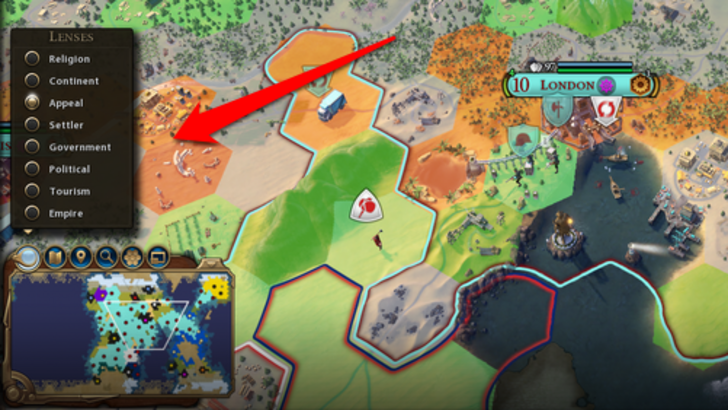 As complexity increases, search, filtering, and sorting become crucial. Civ 6's robust search function exemplifies this.
As complexity increases, search, filtering, and sorting become crucial. Civ 6's robust search function exemplifies this.
Civ 7 lacks this crucial search functionality, a significant usability issue given the game's scale. This omission is a major drawback.
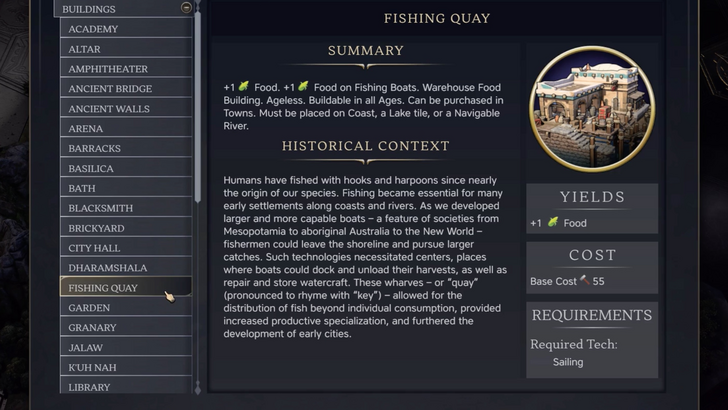
Design and Visual Consistency
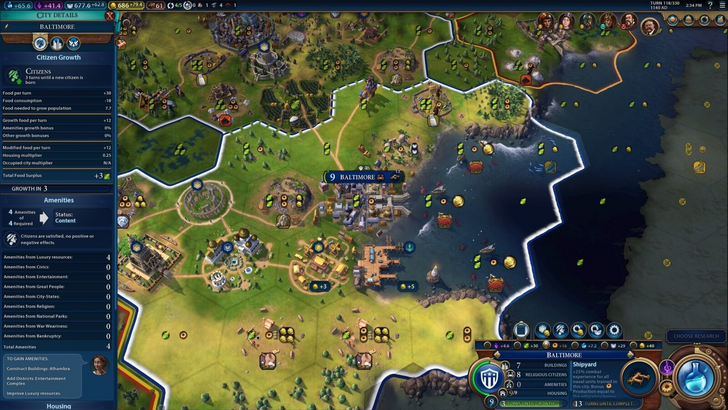 UI aesthetics and cohesiveness are vital. Civ 6's dynamic, cartographical style seamlessly integrates with the game's overall aesthetic.
UI aesthetics and cohesiveness are vital. Civ 6's dynamic, cartographical style seamlessly integrates with the game's overall aesthetic.
Civ 7 adopts a minimalist, sleek design. While not unattractive, its subtle thematic direction may not resonate with all players. The visual design is subjective, but the lack of immediate clarity has contributed to mixed reactions.
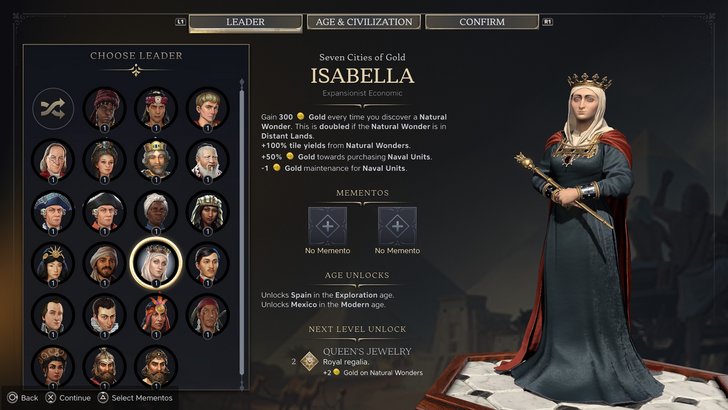
Conclusion: Not as Bad as Advertised
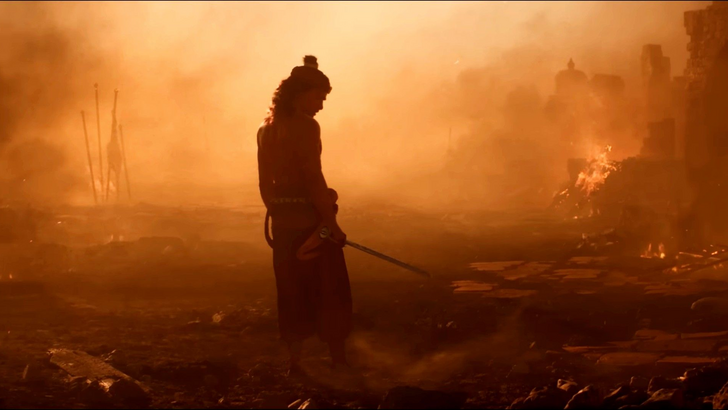 While Civ 7's UI isn't perfect, it's not as disastrous as some claim. The missing search function is a significant flaw, but not game-breaking. Compared to other issues, the UI shortcomings are relatively minor. While it lacks the visual appeal of some competitors, its strengths should be acknowledged. With updates and player feedback, it has the potential to improve significantly.
While Civ 7's UI isn't perfect, it's not as disastrous as some claim. The missing search function is a significant flaw, but not game-breaking. Compared to other issues, the UI shortcomings are relatively minor. While it lacks the visual appeal of some competitors, its strengths should be acknowledged. With updates and player feedback, it has the potential to improve significantly.
← Return to Sid Meier's Civilization VII main article
Sid Meier's Civilization VII Similar Games


